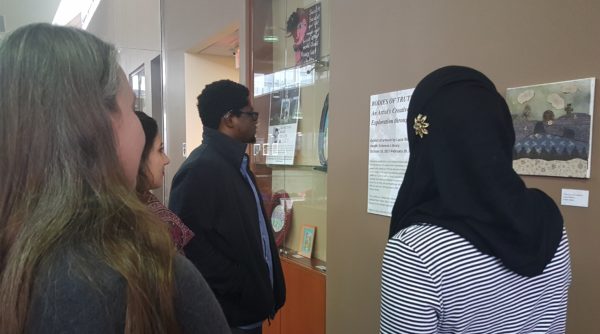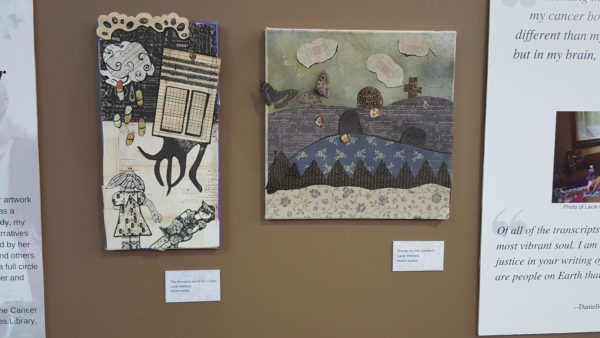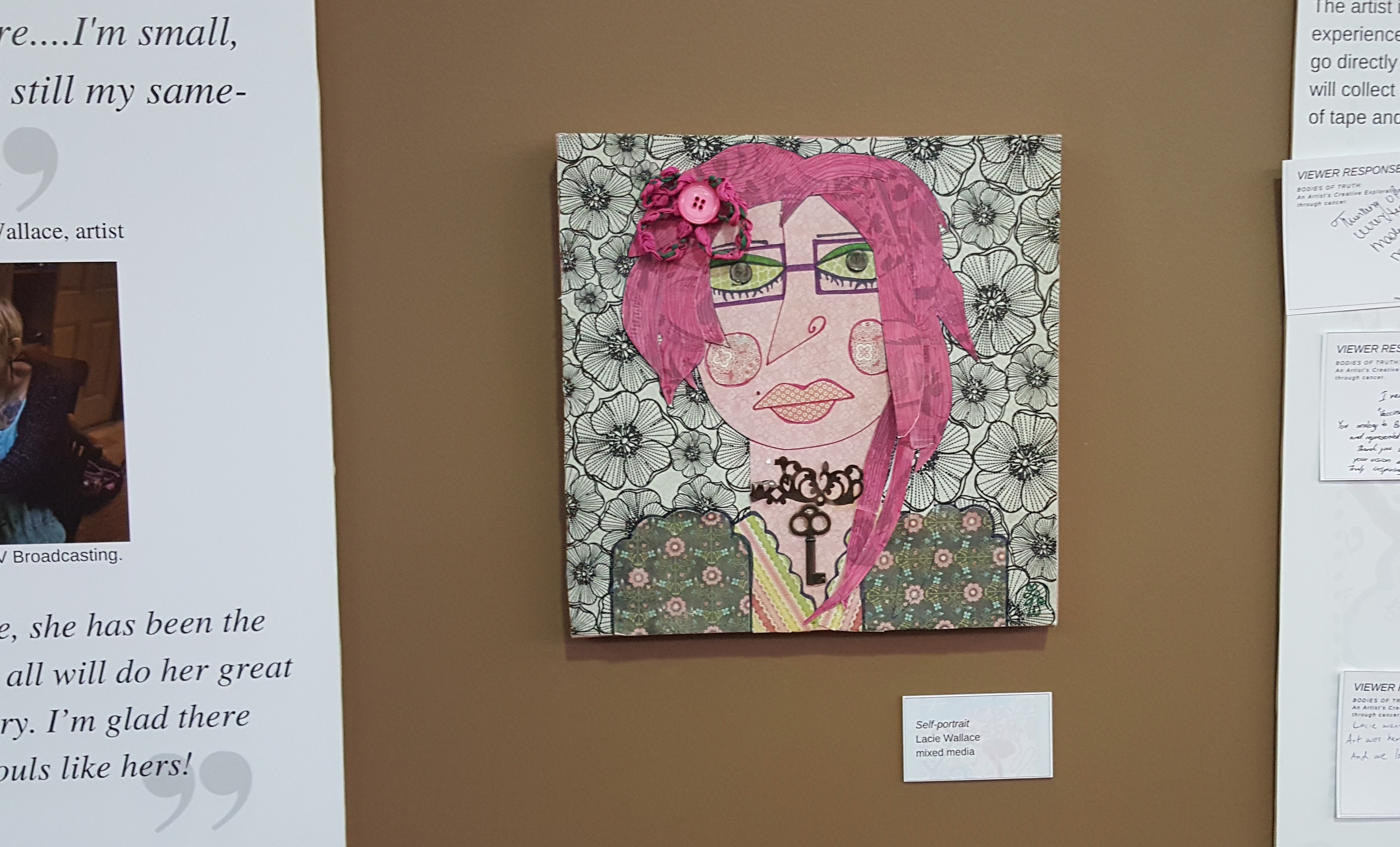
Bodies of Truth, an art exhibit on display at West Virginia University’s Health Sciences Center, illustrates a cancer patient’s struggle with the disease and informs the rising generation of medical professionals with insights to the people they will treat.
The artist Lacie Wallace died before her final exhibition opened October 10. She left a remarkable testament to the final months of her life and the struggle that was being a patient. “I think she had a unique perspective; woman, mother, artist cancer patient,” Sally Brown Deskins, Exhibits Coordinator and an artist herself, said of the late Wallace. “It gives insight for someone with a loved one, that kind of connection, and hopefully will help at least one person.”
Assistant professor Renee Nicholson, a writer and dancer, praised Wallace’s work. “Her lens on the world was really interactive…She wanted people to touch the art, check the back, engage it.”
Nicholson and others spoke to the meaning of Wallace’s work and its commentary on treatment. Carrying a port for infusions led to an interesting view. “It’s provocative,” Nicholson said. “Some of her work contained robots. She felt like the medicine was making her a robot. It resonates with patients.”
Adriana Herrera, a Junior hoping to become a psychiatrist expressed a similar sentiment. “I interpreted it as her treatment taking her humanity, manipulating her, but she’s still holding on to her humanity.”
Despite the potentially controversial nature of Wallace’s work, exhibitors felt no need to censor or hide her work. Some pieces take an anti-vaccine stance. Ogaga Uhrie, a medical student with a close engagement in the arts and a poet, welcomed the work for starting a conversation. “We do want people to express their concerns; that allows us to have a discussion. That’s a good thing for both patient and physician.”
Insight is a goal of narrative medicine, a creative approach to engaging patients with their care. Nicholson works with patients and students to create a mutually beneficial atmosphere of learning and treatment. “Help people cope with their illness, connect with loved ones, the emotional aspect,” is how Nicholson described the goals of her grant-funded program.
Nicholson teaches an honors course on the arts and medicine for undergraduates as well as mentoring some medical students. Her pupils are enthusiastic to participate in this and other exhibits and apply the lessons in their own practices. “A student told me he would’ve come even if it wasn’t required.” Nicholson said. “That makes me really hopeful.”
Uhrie is president of an Arts and Humanities interest group composed of medical students called Of the Mindful Physician. He and others hope to “use knowledge to fill the gap and understand what the patient is going through.”
Dr. Kany Aziz, an internal medicine and pediatrics resident and a writer, met Wallace through palliative care but returned as a friend. “I’d visit on my own time,” Aziz said. “Never her doctor. It just worked.” Aziz values Wallace’s insights for the long period she endured. She was also privileged to witness the art evolve as time passed. “She was almost at the end of her life for a very long time. Seeing the backstory, knowing the artist, it’s inspiring,” Aziz said.
Aziz and Uhrie expressed appreciation for the narrative medicine approach for improving quality of life for medicos as well. “From a resident’s standpoint, it is difficult; being able to express and recognize your feelings and they matter,” Aziz said. Uhrie said narrative medicine could develop “coping skills for residency.”

For her part Rachel Tallman, a Senior and early decision acceptance to the medical school, sees the value in narrative medicine as a break from the driven atmosphere of scientific and medical study. Her arts and medicine class is the only forum that “focuses on talking about being a doctor that’s not – scientific.” That break helped her reassess her own approach and the way she wants to practice medicine. “I hope this makes me more compassionate and a better listener.”
Although those who worked with Wallace miss her, they believe she’s given them a gift in her passing. Nicholson feels a greater empathy with other patients in her program and has made friendships where Wallace was the tying thread. “There’s a whole community in the infusion center, comments about the free lunch, inside jokes… I really love collaborating with health professionals. I find I’m at my best,” Nicholson said.
Bodies of Truth is on display at the Health Sciences Center library through the end of February.

